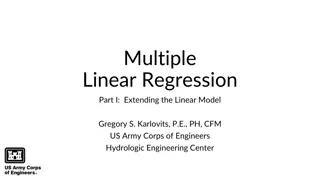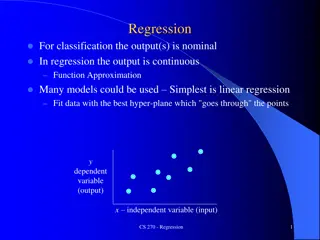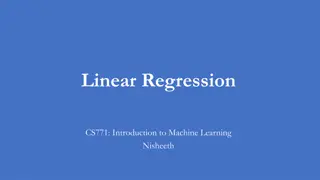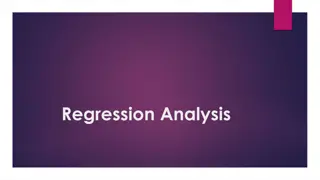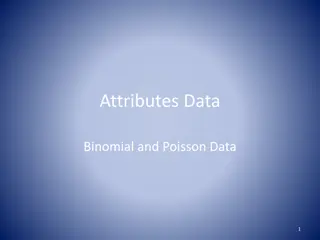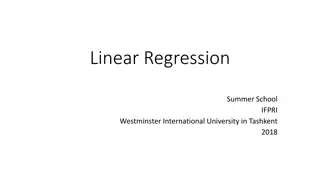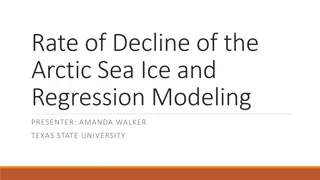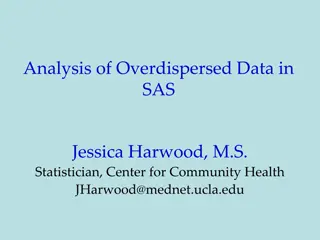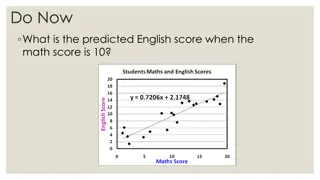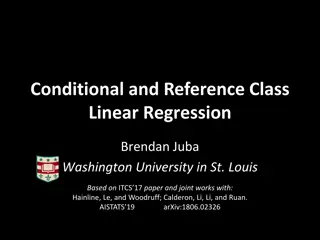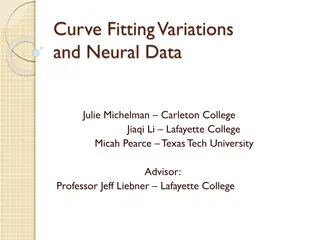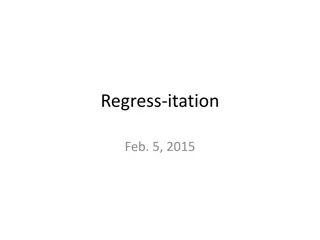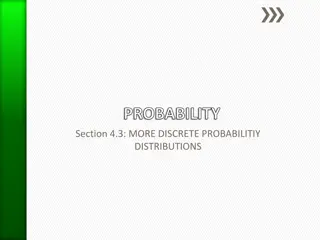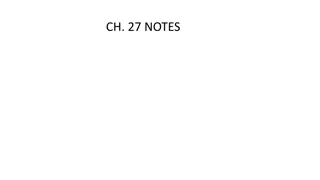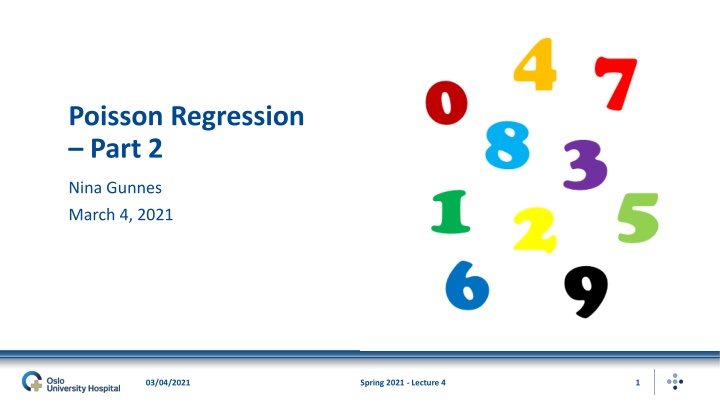
Poisson Regression in Stata: Mortality and Smoking Analysis
Explore how to perform Poisson regression analysis in Stata using real-world data on mortality in relation to smoking. Learn how to load data, inspect variables, conduct crude analysis, and interpret results to assess the impact of smoking on mortality rates among a group of British doctors.
Download Presentation

Please find below an Image/Link to download the presentation.
The content on the website is provided AS IS for your information and personal use only. It may not be sold, licensed, or shared on other websites without obtaining consent from the author. If you encounter any issues during the download, it is possible that the publisher has removed the file from their server.
You are allowed to download the files provided on this website for personal or commercial use, subject to the condition that they are used lawfully. All files are the property of their respective owners.
The content on the website is provided AS IS for your information and personal use only. It may not be sold, licensed, or shared on other websites without obtaining consent from the author.
E N D
Presentation Transcript
Poisson Regression Part 2 Nina Gunnes March 4, 2021 03/04/2021 Spring 2021 - Lecture 4 1
Mortality in relation to smoking Using data on smoking status and death Based on previous publication Doll R, Hill AB. Mortality of British doctors in relation to smoking: observations on coronary thrombosis. Natl Cancer Inst Monogr. 1966;19:205 268. Part of the British Doctors Study (1951 2001) Follow-up of approximately 40,000 British medical doctors Questionnaire about smoking habits Association of smoking with lung cancer and other diseases 03/04/2021 Spring 2021 - Lecture 4 2
Mortality in relation to smoking, cont. 03/04/2021 Spring 2021 - Lecture 4 3
How to do it in Stata: Data load Using webuse command Data available on Stata s website https://www.stata- press.com/data/ Loading data set over the web Name: dollhill3 03/04/2021 Spring 2021 - Lecture 4 4
How to do it in Stata: Data inspection Using describe command Describing data in memory Summary of the data set 03/04/2021 Spring 2021 - Lecture 4 5
How to do it in Stata: Data inspection, cont. Using list command Listing values of variables Interpreting person-time End time minus inclusion time 03/04/2021 Spring 2021 - Lecture 4 6
How to do it in Stata: Crude analysis Using poisson command Fitting a simple Poisson model Outcome: deaths Person-time: pyears Exposure (dichotomous): smokes Interpreting the results 72% higher risk among smokers 03/04/2021 Spring 2021 - Lecture 4 7
How to do it in Stata: Crude analysis, cont. Calculating the incidence rate among smokers Number of deaths: ?1= 630 Number of person-years: ?1= 142247 Estimated incidence rate (per 10,000 person-years): ?1= Calculating the incidence rate among non-smokers Number of deaths: ?0= 101 Number of person-years: ?0= 39220 Estimated incidence rate (per 10,000 person-years): ?0= ?1?1= 44.29 ?0?0= 25.75 03/04/2021 Spring 2021 - Lecture 4 8
How to do it in Stata: Crude analysis, cont. Calculating the estimated crude incidence rate ratio ??? = ?1 ?0= 1.72 Calculating a 95% confidence interval of the incidence rate ratio Lower limit: ??? ? 1.96 Upper limit: ??? ?1.96 Confidence interval: 1.39,2.12 Same result as in Stata! 1 ?1+ 1 ?0= 1.39 1 ?1+ 1 ?0= 2.12 03/04/2021 Spring 2021 - Lecture 4 9
How to do it in Stata: Adjusted analysis Using poisson command Fitting a multiple Poisson model Outcome: deaths Person-time: pyears Exposure 1 (dichotomous): smokes Exposure 2 (categorical): agecat Interpreting the results 43% higher risk among smokers 03/04/2021 Spring 2021 - Lecture 4 10
How to do it in Stata: Dummy variables Using generate and replace commands Creating dummy variables (indicator variables) for age categories Reference: age category 35 44 Dummy variable 1 (age category 45 54): agecat_45_54 Dummy variable 2 (age category 55 64): agecat_55_64 Dummy variable 3 (age category 65 74): agecat_65_74 Dummy variable 4 (age category 75 84): agecat_75_84 Dummy variable equal to 1 if in relevant age category, 0 otherwise 03/04/2021 Spring 2021 - Lecture 4 11
How to do it in Stata: Dummy variables, cont. 03/04/2021 Spring 2021 - Lecture 4 12
How to do it in Stata: Dummy variables, cont. 03/04/2021 Spring 2021 - Lecture 4 13
How to do it in Stata: Test for trend Incidence rate ratio increasing by age category Trend? Including age category as a continuous (not categorical) variable Testing hypothesis of the coefficient for age category Null hypothesis: ? = 0 Alternative hypothesis: ? 0 Evaluating test for trend by corresponding P value P value less than significance level statistically significant trend 03/04/2021 Spring 2021 - Lecture 4 14
How to do it in Stata: Test for trend, cont. Inspecting results Incidence rate ratio: Statistically significant trend P value: ? < 0.001 ??? = 2.31 03/04/2021 Spring 2021 - Lecture 4 15
How to do it in Stata: Goodness of fit Using estat gof command Based on LAST (!) fitted model Fitting multiple Poisson model Age as categorical variable See slide 10 Performing a goodness-of-fit test Deviance Pearson 03/04/2021 Spring 2021 - Lecture 4 16
References Aalen OO, Frigessi A, Moger TA, Scheel I, Skovlund E, Veier d MB. Statistiske metoder i medisin og helsefag. Oslo: Gyldendal akademisk; 2006. Laake P, Hjart ker A, Thelle DS, Veier d MB. Epidemiologiske og kliniske forskningsmetoder. Oslo: Gyldendal akademisk; 2007. https://www.med.uio.no/imb/forskning/publikasjoner/boker/2007/e pidemiolgiske-kliniske-forskningsmetoder.html. 03/04/2021 Spring 2021 - Lecture 4 17

